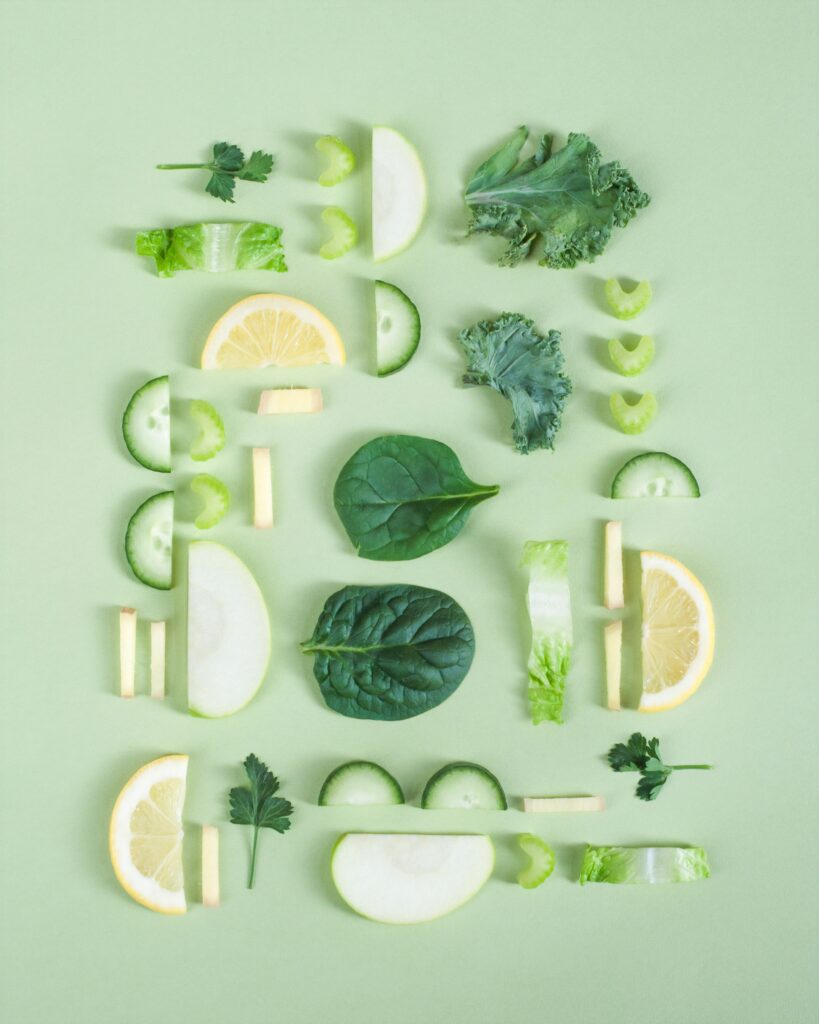What Is The Difference Between Green And Sustainable: Introduction
In the world of environmentalism, the terms “green” and “sustainable” are often used interchangeably. They pop up in everything from corporate mission statements to government policies. However, a closer look reveals that these terms are not synonymous. So, what is the difference between green and sustainable? Understanding this distinction is crucial for anyone who wants to be an informed consumer, advocate, or policymaker in the realm of environmentalism.
Both “green” and “sustainable” aim to mitigate the impact of human activity on the Earth, but they do so in different ways. Green” often focuses on immediate actions that can be taken to reduce harm, like recycling or using renewable energy. On the other hand, “sustainable” takes a long-term view, seeking to create systems and practices that can endure over time without depleting resources or causing environmental damage.
Knowing the nuanced differences between “green” and “sustainable” can significantly inform the choices we make, from the products we buy to the causes we champion. It is not just a matter of semantics; these terms guide ideologies, influence policies, and dictate the avenues for innovation and change.
In this article, we will explore the subtle but significant differences between these two vital terms. We will delve into their origins, examine real-world applications, and look at how understanding these concepts can lead to a more eco-friendly lifestyle. By doing so, we aim to equip you with the knowledge to make impactful decisions that contribute to a greener, more sustainable future for all.

Check Out Our Top Eco Friendly Product Picks On Amazon Here
What Is The Difference Between Green And Sustainable: Definition of Green
Green refers to practices or approaches that have an environmental focus. The term captures a broad spectrum of activities aimed at reducing harm to the planet. While the green movement overlaps with sustainability, it has its unique characteristics and focal points.
Environmental Focus
The environmental focus is the cornerstone of green initiatives. This commitment manifests in various sectors, including manufacturing, agriculture, and energy production. The central tenet is that all activities should aim to protect or improve the natural world. Thus, the environment isn’t just a consideration—it’s a priority. Whether a company is looking to clean up a polluted river or a community is rallying to plant more trees, the ultimate aim is always environmental betterment.
Reducing Environmental Impact
Reducing the environmental impact is the driving force behind green practices. Essentially, this involves cutting back on harmful emissions, minimizing waste, and making better use of natural resources. Initiatives might include installing solar panels, promoting electric vehicles, or even simple acts like recycling. It is often about making immediate changes that yield quick benefits. For example, switching from single-use plastics to reusable items brings about instant reductions in waste and resource use.
Resource Efficiency
Resource efficiency plays a significant role in green practices. This isn’t just about using less; it’s about using smarter. Consider green buildings, which not only use energy-efficient materials but also employ design principles that maximize natural light, thereby reducing electricity needs. Similarly, green agriculture techniques may leverage advanced irrigation systems to minimize water usage or use organic farming practices that enrich rather than deplete the soil. Resource efficiency is all about doing more with less, stretching each unit of resource to its fullest potential.
Synergies and Distinctions between Green and Sustainable
Although the terms green and sustainable are often used interchangeably, understanding their differences allows us to appreciate how they can work in synergy. While green initiatives often provide immediate solutions to environmental issues, sustainable practices look at the long-term viability of these actions. For example, a green action may involve installing solar panels on a building, but the sustainability aspect would delve into whether the solar panels were produced in a way that can be maintained over decades without causing harm to the environment.
By fully understanding the interplay between green and sustainable, we can better navigate the challenges and opportunities that lie ahead in the realm of environmental stewardship. This knowledge equips us to make more informed decisions, from choosing eco-friendly products to advocating for policies that will secure a healthier planet for future generations.
What Is The Difference Between Green And Sustainable: Definition of Sustainable
Sustainable refers to practices that focus on long-term well-being. These practices aim for a balance across environmental, social, and economic domains. They seek to meet current needs without jeopardizing the future.
Long-term Perspective
The essence of sustainability is its long-term view. This outlook goes beyond immediate effects to consider future impact. Choices made today shape the world of tomorrow. Therefore, sustainability aims for long-term viability. It seeks to build a resilient world for future generations.
Balance of Environmental, Social, and Economic Factors
Sustainability strives for a multifaceted balance. It harmonizes environmental, social, and economic needs. This is often called the “triple bottom line.” In this model, all three pillars are interlinked. They must be considered together. For instance, a truly sustainable business considers more than profit. It also focuses on ethical practices and environmental impact.
Holistic Approach
Sustainability is holistic in nature. It looks at the whole picture, understanding the web of interconnections that define our world. Environmental, social, and economic factors are not isolated. They are intertwined in complex ways. Therefore, sustainable practices account for these links. They aim for comprehensive solutions that benefit all aspects of society and the natural world.
Environmental Impact
Both green and sustainable initiatives aim to lessen environmental damage, but they approach this goal from different angles. Understanding their distinctive features can help us appreciate the roles each plays in fostering environmental well-being.
Green: Focuses on Reducing Environmental Impact
Green initiatives zero in on immediate reductions in environmental impact. These actions may include adopting cleaner manufacturing technologies or reducing greenhouse gas emissions. For instance, a company might introduce energy-efficient machinery to cut down on power consumption.
The green approach also emphasizes waste minimization. This could manifest in a push for reusable packaging or recycling programs. The core idea is to lessen the direct harm we do to the environment right now. Green practices try to offer immediate solutions that can be rapidly implemented.
Sustainable: Considers Wider Environmental Impacts
Sustainability, on the other hand, takes a more expansive view. It goes beyond immediate concerns to consider longer-term and wider-scale impacts. For example, while a green initiative might focus on reducing a factory’s emissions, a sustainable approach would also investigate the entire lifecycle of the products being made.
Sustainability also considers ecosystem balance and biodiversity. It looks at how actions might impact various species and natural habitats. For example, sustainable forestry practices take into account how tree-cutting affects not just the immediate area, but also local wildlife and the broader ecosystem.
Moreover, sustainable initiatives think about global impacts like climate change. They ask questions like: “How will this action affect global carbon levels?” or “What will be the long-term consequences on sea levels and weather patterns?” By taking a broader perspective, sustainable actions aim for comprehensive, long-lasting benefits.
The Integrated Approach: Combining Green and Sustainable
It’s crucial to recognize that green and sustainable are not mutually exclusive. They can be integrated for more effective environmental stewardship. A green initiative can serve as a stepping stone to more sustainable practices. For instance, a company might start by reducing its immediate carbon footprint (a green action) and then move towards creating a sustainable supply chain that considers long-term impacts.
This integrated approach allows us to utilize the strengths of both green and sustainable methodologies. It provides immediate solutions while also laying the groundwork for enduring change. By understanding the scope and limitations of each, we can employ them in tandem to accelerate our progress toward a healthier planet.
Resource Consumption
Green: Emphasizes resource efficiency
Green practices place a strong emphasis on resource efficiency. This means using resources in a way that minimizes waste and promotes sustainability. By optimizing resource usage, such as energy, water, and materials, green initiatives aim to reduce their overall environmental footprint.
Sustainable: Considers resource renewal and conservation
Sustainable practices go a step further by not only focusing on resource efficiency but also considering resource renewal and conservation. It recognizes the finite nature of many resources and prioritizes their preservation. This may involve promoting renewable energy sources, implementing sustainable farming practices, and supporting responsible consumption of goods and services.

Renewable Energy
Green: Encourages the use of renewable energy sources
Green initiatives actively promote the use of renewable energy sources. This may include solar, wind, hydroelectric, or geothermal energy. By shifting away from fossil fuels and embracing clean and renewable alternatives, green practices aim to reduce greenhouse gas emissions and mitigate climate change.
Sustainable: Balances renewable energy with overall energy consumption
Sustainable practices take a more balanced approach to renewable energy. While encouraging the use of renewable sources, they also consider the overall energy consumption. It recognizes the need for efficiency and conservation alongside the adoption of renewable energy technologies. By balancing both aspects, sustainable initiatives strive for a more comprehensive and sustainable energy future.
Waste Management
Green: Focuses on reducing waste generation
Green practices prioritize waste reduction. This may involve implementing recycling programs, minimizing packaging waste, and adopting circular economy principles. The goal is to reduce the amount of waste produced and minimize its impact on the environment.
Sustainable: Aims for waste reduction, recycling, and circular economy
Sustainable practices take waste management a step further by aiming for waste reduction, recycling, and the implementation of circular economy principles. It emphasizes the importance of reusing materials, minimizing waste sent to landfills, and finding innovative ways to repurpose waste. By adopting a circular economy approach, sustainable initiatives strive for resource efficiency and waste reduction throughout the entire lifecycle of products and materials.

Health and Well-being
Green: Considers the immediate health impacts
Green initiatives take into account the immediate health impacts on individuals and communities. This may include minimizing exposure to toxins, improving indoor air quality, and promoting healthier lifestyles. By prioritizing human health, green practices aim to create safer and healthier environments for all.
Sustainable: Considers long-term health and well-being
Sustainable practices extend beyond immediate health impacts to consider long-term health and well-being. It recognizes that environmental, social, and economic factors all play a role in determining the overall health and well-being of individuals and communities. By promoting sustainable development and equitable access to resources, sustainable initiatives aim to create healthier and more resilient societies.
Economic Viability
Green: May be more focused on short-term economic benefits
Green practices often prioritize short-term economic benefits. This may involve cost-saving measures, such as energy-efficient technologies or waste-reduction strategies. While economic viability is important, the primary focus is on reducing environmental impact without compromising profitability.
Sustainable: Considers long-term economic viability
Sustainable practices take a broader perspective by considering the long-term economic viability. It recognizes that short-term gains may not always align with long-term sustainability goals. By adopting sustainable business models and practices, sustainable initiatives strive to create economic systems that are resilient, inclusive, and capable of supporting future generations.

What Is The Difference Between Green And Sustainable: Social Equity
Green: May give less consideration to social equity
Green initiatives may not always prioritize social equity. While they strive to minimize environmental impact, the social aspect may not be the central focus. However, it is important to note that green practices can still have positive social outcomes, such as creating green job opportunities or promoting healthier living conditions.
Sustainable: Promotes social equity and justice
Sustainable practices place a strong emphasis on social equity and justice. It recognizes that environmental and social issues are often interconnected and must be addressed together. Sustainable initiatives aim to create a more equitable society by promoting access to resources, reducing disparities, and empowering marginalized communities. By prioritizing social equity, sustainable practices strive for a more just and inclusive world.
Industry Standards and Certifications
Green: Recognized labels include Energy Star, Green Seal
Green initiatives often rely on recognized labels and certifications to signify their commitment to environmental sustainability. Energy Star, for example, is a well-known label that identifies energy-efficient products. Green Seal is another certification that recognizes environmentally responsible products and services. These labels help consumers identify and support green practices.
Sustainable: Recognized labels include LEED, BREEAM, Fair Trade
Sustainable initiatives also utilize recognized labels and certifications to indicate their commitment to sustainability. LEED (Leadership in Energy and Environmental Design) and BREEAM (Building Research Establishment Environmental Assessment Method) are widely recognized certifications for sustainable building practices. Fair Trade certification promotes equitable trade practices, ensuring that farmers and workers receive fair wages and working conditions. These labels provide assurance that sustainable practices are being followed across various industries.
In conclusion, while there is overlap between the concepts of green and sustainable, they have distinct differences. Green practices primarily focus on reducing environmental impact and resource efficiency, while sustainable practices encompass a broader perspective, considering the balance of environmental, social, and economic factors. Both green and sustainable initiatives play vital roles in addressing the challenges of environmental sustainability, and by adopting these practices, we can strive for a better and more sustainable future.




